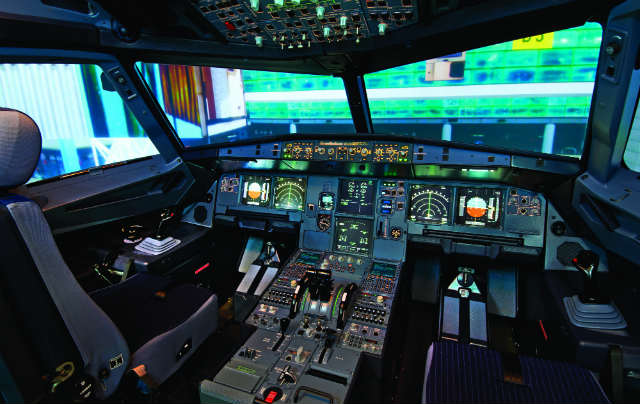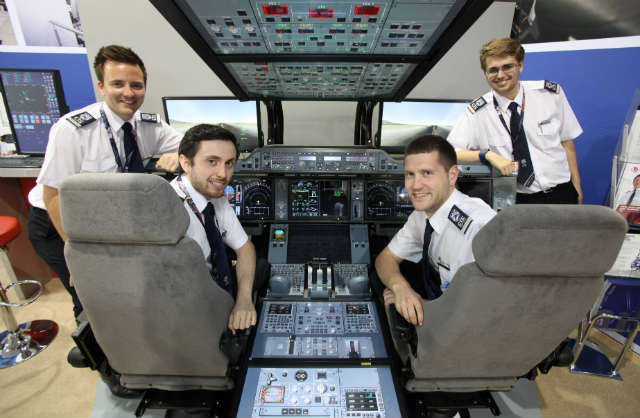Eighteen months on from its acquisition of UK-based training provider CTC Aviation, L-3 Communications has further strengthened its position in the sector, by successfully transforming its simulator production process.
Alan Crawford (below), president of the recently rebranded L-3 Commercial Training Solutions (CTS) business unit, says CTC and its Link simulation operation now benefit from a shared strategic and investment plan, and offer customers a single point of contact. Some back-office and finance functions have been consolidated to increase efficiency, he adds.

BillyPix
CTC is responsible for all training services, and earlier this year appointed Robin Glover-Faure, the former head of British Airways’ short-haul operations, as its vice-president – airline training.
“We’re growing rapidly,” says CTC Aviation president Rob Clarke. The company trains ab initio pilots at sites in the UK, New Zealand and the USA, and delivers multicrew pilot licence training for numerous airlines, including British Airways, EasyJet and Norwegian. “We are a one-stop shop, from selection through to training examiners – and everything in between,” adds Clarke.
Crew training capacity is being increased at the L-3 CTS site in Crawley, near London Gatwick airport, with the number of simulators available to support airline training to double, to four. Additionally, the company isincreasing the number of devices at its Bangkok facility in Thailand from six to eight, to support the instruction of pilots for ATR-series turboprops, Airbus A320s and A330s.
“L-3 has invested a lot in the business: on acquisitions and facilities. There are [growth] opportunities almost globally,” Crawford says, pointing to a looming commercial pilot shortage in the USA and the need for incoming candidates to obtain increased experience – at least 1,500h – before flying for major carriers. He believes potential also exists to do more business in Asia and the Middle East, where CTC already supports crew selection for Flydubai and delivers cadet training for Qatar Airways.
Pointing to “unprecedented demand” seen for its services over the last 12 months, Clarke notes: “The blocker for us is the funnel at the start and getting the right quality of people in.” The company is working with airlines and the UK government in a bid to reduce the cost of training – for example, by underwriting loans or potentially providing tax breaks – to attract a wider demographic of applicants.
Also at its Crawley site, L-3 Link Simulation & Training has introduced a new model for manufacturing and delivering simulators, enabling customers to test 80-90% of a system without it being fully assembled. This approach can cut the acceptance test activity to as little as one week before a simulator can be approved for shipment. Crawford says the new approach has been made possible by its RealitySeven product (below), where three of its four modules – pneumatics, docking platform and visual system – are entirely common, with only the cockpit differing.

L-3 Link Simulation & Training
L-3 is on target to achieve an objective to increase simulator deliveries this year, with Crawford expecting up to 20 devices to be shipped. “We have leased a second site nearby for just module builds – there is so much demand,” he says. The additional facility is capable of accommodating eight simulators at any one time.
Recent shipments have included A330 and Boeing 737 simulators for Turkish Airlines, and the first device for an airline customer of the Sukhoi Superjet 100: Mexico’s InterJet. Later this year it will also transfer a second A350 simulator for Cathay Pacific, and another for the same type to Delta Air Lines. It also exhibited a new training product at July’s Farnborough air show: the A350 flat-panel device produced for Cathay (below).

BillyPix
In addition to speeding the process for simulator production and acceptance, L-3 CTS now provides a greatly improved support service, says Mitesh Patel, the company’s sales, marketing and customer excellence director. Previously, a replacement component could take six to eight weeks to be delivered, but, he notes,“now we have an online store, and customers can have a part within 48h”.
New features continue to be developed, with L-3 CTS working with groups such as ICAO and the Royal Aeronautical Society to find improvements in upset recovery training. Additionally, Airbus and Boeing are developing extended stall models to assist with simulator instruction, Patel says.
Source: FlightGlobal.com






















